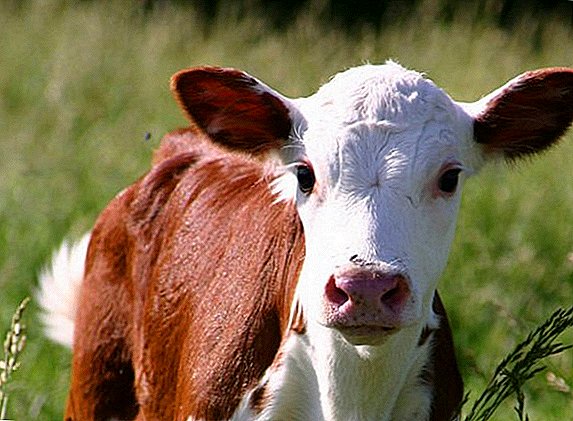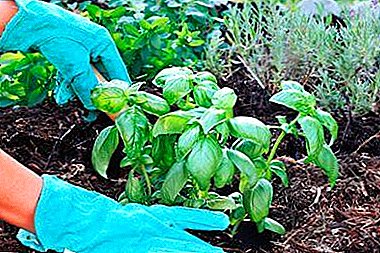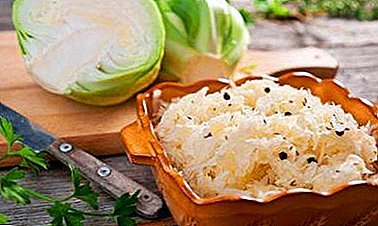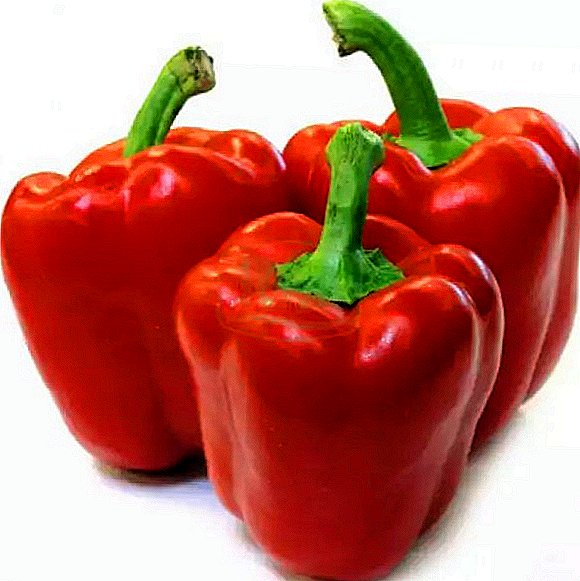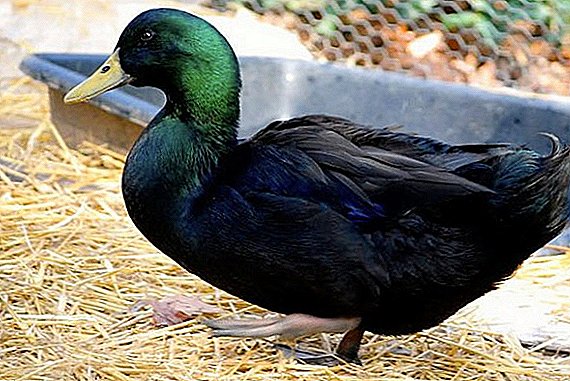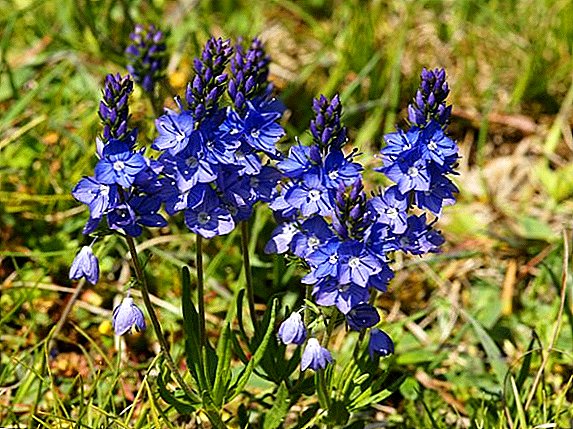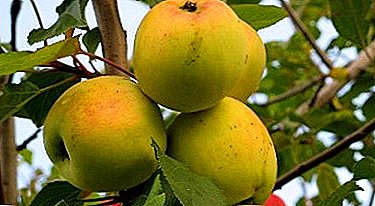
What varieties are called winter? These are apples that are able to persist during the cold season, when vitamins are needed more than ever.
These are the Urals winter variety. Iset Late.
Full description of the variety and photos, read the article.
What kind is it?
 These apples include for winter variety Sverdlovsk Experimental Station Gardening.
These apples include for winter variety Sverdlovsk Experimental Station Gardening.
The variety was bred by the doctor of agricultural sciences. L. A. Kotov by crossing varieties amber and Generous.
Apple tree begins to bear fruit in the fifth year.
Fruits ripen in early fall (apples are removed in end of September) and persist until spring (February March).
Vityaz, Zvezdochka, Zavetny, Lada and Krasa of Sverdlovsk also belong to winter varieties with the same ripening period.
Differ good transportability. Suitable for use as a "natural" form, and in the form of jam, jam, juice, wine.
It should briefly describe the storage technology for the winter (will be detailed in a separate article) - i.e. exactly how to store (cellar, buckets, boxes, etc.).
It should be remembered that these apples defenseless before scaband besides, like all apples in general, great absorb odors.
If they are stored in a pit, then there should not be other vegetables and root vegetables - this makes the apples tasteless. You can store them in boxes or buckets, without sawdust and paper, within the temperature from 0 to +4 degrees.
Pollination
Isetskoe later refers to samobedplodnyh varieties. Requires cross-pollination. You can plant next to any other winter-hardy varieties.
Winter-hardy varieties include: Gorno-Altai, Granny Smith, Uralets, Orlovskoye Polesye and Altai Rumyany.
Description of a grade Isetsky late
According to external signs, this sort of similarity is most similar to the “mother” - the variety “Generous”.
 Tree is different medium tall, winter hardy. Crohn round shape.
Tree is different medium tall, winter hardy. Crohn round shape.
The shoots are medium thick, brown, rounded at the cut.
The leaves have a matte light green color, rounded base, short petiole.
The tip is elongated, pointed. The flowers are small, cupped, white with a pinkish tinge, long stamens and stigmas of the pistils.
Small apple (usually does not exceed 100 g), tightly held on a tree, has the shape of a truncated cone, ribbing is weakly expressed. The skin is characterized by a soft tan and high oiliness in winter; the pulp has a pronounced table sweet-sour taste.
A photo

Breeding history
Until the 20th century, gardening did not flourish in Siberia and the Urals. In general, very few people were engaged, with the exception of individual lovers who grew fruit trees from seeds and seedlings brought from warmer regions.
This continued until the beginning of the 1930s. The Ural Zonal Fruit and Berry Station is the northernmost in the Union.
The goal of the Ural breeders both then and to this day remains the selection and breeding of fruit crops that will feel good in the harsh conditions of the Urals and Siberia and even actively bear fruit, and at the same time resist negative influences, such as scab.
 It is the Ural researchers who owe the country to the emergence of varieties of different ripening periods, both acidic and sweet, bright, saturated. vitamins C and R.
It is the Ural researchers who owe the country to the emergence of varieties of different ripening periods, both acidic and sweet, bright, saturated. vitamins C and R.
Ural breeders bred, for example, Uralets, Nastenka, Anis Sverdlovsk, Altai Crimson and Belfleur Bashkir.
Also especially large-fruited apple trees, whose fruits can reach 250 g
Even the inhabitants of the northern peatlands did not remain deprived of “paradise fruits” - so-called “juice varieties” were created for them.
It is medium sized, weighing no more than 80 g apples with special winter hardiness.
One of the most significant recent achievements of the Ural breeders - breeding winter hardy varieties not afraid of scab. Even in epiphytotic periods, they actively bear fruit and do not need treatment with various poisonous pesticides.
Resistant to scab varieties such as Winter Beauty, Marina, Antonovka ordinary, Bogatyr and daughter of Melba.
This, however, cannot be said about the Isetsky Late - this variety is not resistant to scab.
Natural growth region
According to the State Register of Breeding Achievements, can be used in the Urals and in the Volga-Vyatka region. To the "habitat" of these apples are mainly Perm, Chelyabinsk, Kurgan, Sverdlovsk regions, also Udmurtia. There are in other parts Volgo-Vyatka regionbut less often.
For planting in these regions, varieties are excellent: Rennet Chernenko, Snowdrop, Pepin Saffron, Ural Bulk and Solntsedar.
Yield
 The tree begins to bear fruit on the fifth code after budding, characterized by high yield, average heat and drought tolerance, average maturation rate (winter).
The tree begins to bear fruit on the fifth code after budding, characterized by high yield, average heat and drought tolerance, average maturation rate (winter).
Apples are removed by the end of September.
Duration of storage and consumption is 150 days.
Planting and care
Correct actions of the gardener when planting - the key to successful ripening of the seedling, and the ability to competently care for him will help to get the best harvest.
Plant best in spring - the end of April and the beginning of May, on the soil which has departed and thawed out after winter. At the very beginning of the sapling it is necessary to water frequently and plentifulso that the roots do not dry out.
The pit and the soil is prepared about seven days before the intended planting of seedlings. With good soil maximum depth does not exceed 60 cm. If the soil leaves much to be desired, the fossa should be ten centimeters deeper.
A peg is fastened in the center of the pit; one end of it — which goes into the ground — should be burned. It will not let him rot.
 The pit is filled with a mixture of: compost, humus, organic fertilizer, peat, manure, topsoil.
The pit is filled with a mixture of: compost, humus, organic fertilizer, peat, manure, topsoil.
In the center there is a hole, in which a little black soil is poured, and then a seedling is planted.
The latter is tied to a cola to avoid further precipitation.
Next hole filled with three or four buckets of water and covered with earth.
To keep the apple trees fruiting and resistant to cold, 3 kg of apples per square meter should be ripe on the tree. leaves. To do this, the gardener must regulate the number of ripened fruits and remove them in time.
Otherwise, the "kids" pulled out of the "mother" all the forces and the normal overwintering, and their further fruiting may no longer remain. Thus, two thirds of the apple color will have to be removed.
Two ways: tear the flowers with your hands or spray it with a 0.7% solution of soda ash.
The latter is much faster, but the effect is worse - the tree triggers the mechanism of emergency restoration of leaves burned with soda. That is why such trees give no more than two kilos of apples - against five from trees, where the “manual” method was used.
Of great importance is the time of removal of apples. So that the tree has time to prepare for the winter and the apples have retained their taste, it is impossible to delay the harvest of the fruit. Iset it late twenties of september.
Diseases and pests
 Besides //selo.guru/ptitsa/bolezni-p/gribkovye/parsha.html, winter varieties are threatened and such misfortunes as moth.
Besides //selo.guru/ptitsa/bolezni-p/gribkovye/parsha.html, winter varieties are threatened and such misfortunes as moth.
To combat it, the tree is sprayed: solutions of karbofos (approximately 90 g / 1l of water), rovikurt (10 g per liter) or benzophosphate.
Suitable also dendrobatsillin and bitoxibicillin. If scab was added to the parasites, a Bordeaux liquid substitute should be added.
The apple tree can attack and red tick. To combat it use the same karbofos or sulfa drugs.
No less dangerous ailment is bacteriosis. If you do not fight it, the apple tree may die in one season. To do this, you will have to cut the affected branches, grabbing about eight centimeters of eight unaffected tissue.
The cut-off place must be disinfected with a one-percent solution of copper sulfate and covered with garden pitch.
Do not forget about such pests as the fruit sapwood, silkworms, haws, mining moths. Timely preventive measures will help to preserve the harvest.
Winter varieties of apples will delight you with bright, juicy fruits, even in the cold season, for this you need to follow the rules - do not be lazy, plant the seedling correctly and take care of the apple tree without overloading the fruits.
And, of course, carefully inspect, remembering that this variety is vulnerable to pests and scab.


